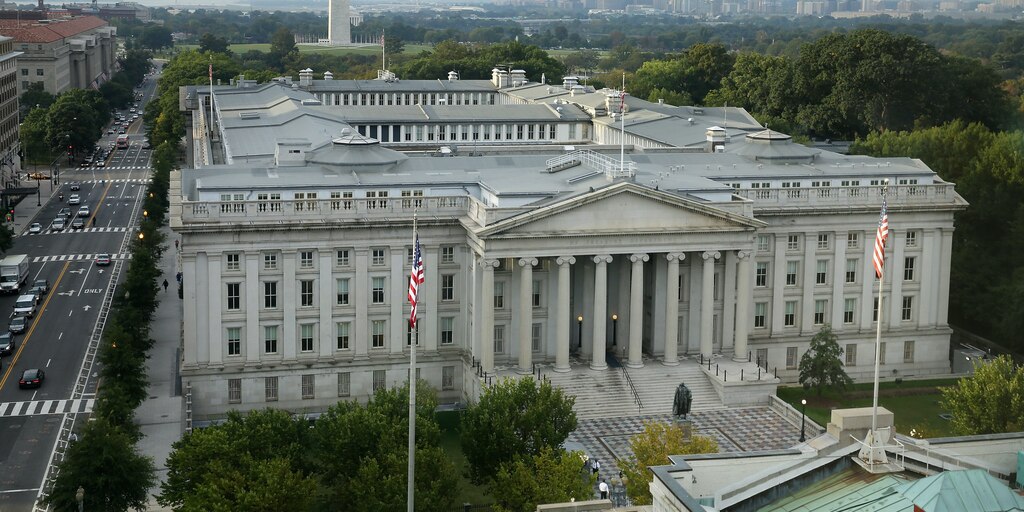 Chip Somodevilla/ Getty Images
Chip Somodevilla/ Getty Images
- Liquidity in the Treasury bill market plummeted to record lows this week, according to JPMorgan, posing a threat to the popular safe haven and the trillions of dollars linked to US bonds.
- Treasury yields serve as a benchmark for emerging market debt, mortgages, and several other fixed-income assets.
- A liquidity problem “makes it much harder to sense the value” of more than $50 trillion in dollar-denominated debt assets around the world, Joshua Younger, head of US interest rate derivatives strategy at JPMorgan, told Bloomberg.
- Treasury liquidity could also be stifled by the rising cost to trade US notes. About two-thirds of 30-year bond trades are occurring with wider-than-usual bid/ask spreads, Bloomberg reported.
- Watch Treasury yields update live here.
US Treasury bills serve as a foundation for bond offerings around the world, but an ominous slowdown in trading is clouding a multitrillion-dollar market.
Treasury yields endured a historic slide over the past few weeks as investors pivoted from risk assets to safe havens amid the coronavirus’ escalating economic risks. The yield curve dipped below 1% on Monday as the oil-price war and continued coronavirus fears drove the worst one-day stock market drop since 2008. Equities now sit in bearish territory, yet those looking for reprieve in debt offerings could be entering a different kind of slump.
Liquidity in the Treasury bill market tanked to record lows this week, JPMorgan analysts wrote Wednesday. When coupled with decade-high market volatility, the lack of Treasury bill trading makes it harder to measure the fixed-income assets tethered to US notes.
Bloomberg first reported on the Treasury liquidity issue and its secondary effects.
Treasury yields are loosely tied to mortgage rates, emerging market debt offerings, and numerous other debt-based securities. A lag in Treasury trading could endanger more than $50 trillion in dollar-denominated debt assets around the world, Joshua Younger, head of US interest rate derivatives strategy at JPMorgan, told Bloomberg.
“The level of volatility and lack of clarity in Treasurys makes it much harder to make sense of the value of all other assets,” he said. “It can create a self-perpetuating flow of expectations that is not really reflective of financial markets and the true level of risk aversion.”
Despite the sharp stock selling taking place throughout the week, Treasury yields have recovered from their record lows. The uptick could be linked to rising costs for note trading. Roughly two-thirds of 30-year bond trades are occurring with wider-than-average gaps between their bid and ask prices, Bloomberg reported, citing JPMorgan data. The heightened trading costs could drive investors from the risk-free notes and exacerbate the liquidity problem.
Yields plunged Thursday morning as the S&P 500 entered bearish territory and investors balked at President Trump’s European travel ban announcement. Whether the prolonged downturn for risk assets can spur new Treasury liquidity remains to be seen, but traders will likely be less inclined to run for cover in US bills until trading activity recovers.
Now read more markets coverage from Markets Insider and Business Insider:
The Dow plunged into a bear market in just 20 days – the fastest 20% drop in history













